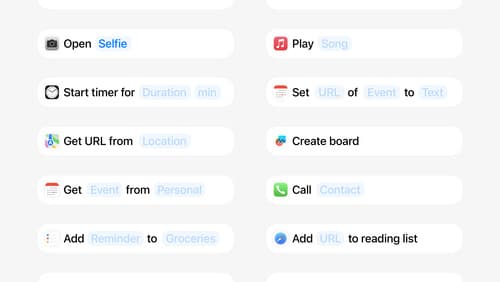App Intents
Asked on 2024-07-30
5 searches
App Intents are a powerful way to extend the functionality of your app beyond its own interface, allowing users to interact with your app's features through various system experiences like Siri, Spotlight, and Shortcuts. Here are some key points about App Intents from the WWDC sessions:
-
Definition and Purpose:
- App Intents are designed to expose your app's core features in a way that the system can understand and present outside of your app. This includes interactions through Siri, Spotlight, Shortcuts, and more (Bring your app’s core features to users with App Intents).
-
Designing App Intents:
- App Intents should be designed to represent the most habitual tasks in your app that could be useful outside of it. In iOS 18, the guidance has expanded to include any functionality your app offers, not just the most common tasks (Design App Intents for system experiences).
- Avoid creating multiple intents for the same task. Instead, structure your app's functionality into flexible intents where parameters can be adjusted (Design App Intents for system experiences).
-
Structuring App Intents:
- App Intents should be flexible and readable across many configurations and use cases. They should include parameter summaries that are clear and understandable (Design App Intents for system experiences).
- If an app intent completes with a change in the app UI or shows search results, it should open the app to show the change. This behavior can be toggled off if the intent is part of a larger shortcut flow (Design App Intents for system experiences).
-
Framework and Implementation:
- The App Intents framework handles the communication between your app and system features like Siri and Spotlight. This allows you to focus on implementing the actual behavior of your features (Bring your app’s core features to users with App Intents).
For a deeper dive into designing and implementing App Intents, you can refer to the following sessions:
Session Chapter Markers
Bring your app’s core features to users with App Intents
- 0 = Introduction
- 89 = Friction versus flow
- 344 = Understanding the framework
- 486 = Building the code
Design App Intents for system experiences
- 0 = Intro
- 110 = Which App Intents to make
- 233 = Structuring App Intents

Bring your app’s core features to users with App Intents
Learn the principles of the App Intents framework, like intents, entities, and queries, and how you can harness them to expose your app’s most important functionality right where people need it most. Find out how to build deep integration between your app and the many system features built on top of App Intents, including Siri, controls and widgets, Apple Pencil, Shortcuts, the Action button, and more. Get tips on how to build your App Intents integrations efficiently to create the best experiences in every surface while still sharing code and core functionality.

Design App Intents for system experiences
App Intents power system experiences in controls, Spotlight, Siri, and more. Find out how to identify the functionality that’s best for App Intents, and how to use parameters to make these intents flexible. Learn how to use App Intents to allow people to take action outside your app, and see examples of when to navigate into your app to show contextual information.
